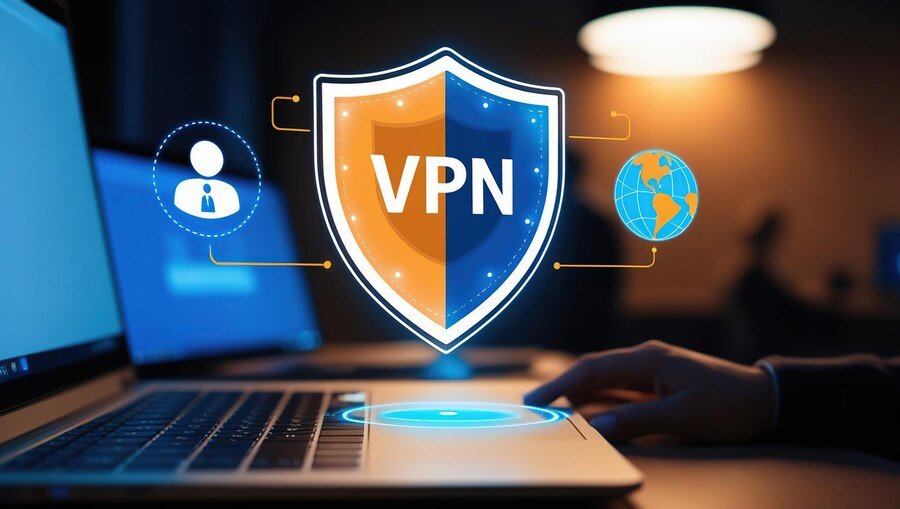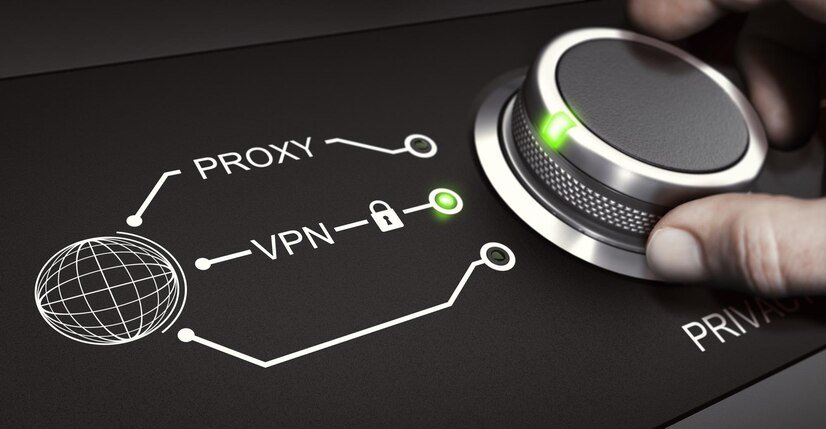
Introduction to Static IP Addresses
In today’s digital landscape, the choice between a static IP address and a dynamic one can significantly impact your online experience. Imagine having a unique identifier for your device that doesn’t change over time — that’s exactly what a static IP address offers. It’s like having your own permanent address in the vastness of the internet.
But with this permanence comes responsibility, especially regarding security. As technology evolves, so do the tactics used by cybercriminals. Whether you’re running a business or simply managing your home network, understanding how to secure your static IP is crucial.
Join us as we delve into the essentials of static IP addresses: their benefits, potential risks, and practical tips for safeguarding them against threats lurking online. Let’s navigate this important topic together!
Understanding IP Addresses
IP addresses are the backbone of internet communication. They serve as unique identifiers for devices connected to a network. Think of them like phone numbers, helping data find its destination.
There are two main types: IPv4 and IPv6. IPv4 is the most commonly used format, consisting of four sets of numbers separated by periods. However, with the growing number of devices online, we’ve started transitioning to IPv6, which uses alphanumeric characters for a virtually limitless range.
Every time you connect to the internet, your device is assigned an IP address—either static or dynamic. Static IP addresses remain constant while dynamic ones change periodically.
Understanding how these addresses work can help users better secure their networks and manage accessibility. Each address contains valuable information about location and connection type, making it crucial for both functionality and security in today’s digital landscape.
Why Use a Static IP Address?
Static IP addresses offer several advantages that can enhance your online experience. One of the key benefits is reliability. With a static IP, you have a consistent address that remains unchanged, making remote access to your network straightforward.
This consistency is particularly beneficial for businesses that rely on hosting services or applications. A static IP simplifies everything from server management to email configuration.
Additionally, having a static IP improves security measures. It allows for easy implementation of firewalls and other protective technologies tailored specifically to known addresses.
For users who need seamless connection with VPNs or require stable connections for telecommuting, static IPs are often preferred. They eliminate potential disruptions caused by changing dynamic addresses, ensuring uninterrupted service when it matters most.
Methods for Securing a Static IP Address
Securing a static IP address requires a multi-layered approach. Start by using firewalls to shield your network from unauthorized access. Configure both hardware and software firewalls for enhanced protection.
Next, implement strong password policies on all connected devices. Use complex passwords that include a mix of letters, numbers, and symbols. Regularly updating these passwords can further reduce vulnerability.
Consider employing Virtual Private Networks (VPNs). A VPN encrypts data transmission, making it harder for attackers to intercept sensitive information.
Regularly update firmware on routers and other network equipment as well. Manufacturers often release security patches that close loopholes in the system.
Monitor traffic activity consistently. This practice helps you identify unusual patterns or potential breaches early on, allowing you to respond quickly before any damage occurs.
Alternatives to Static IP Addresses
For those who find a static IP address isn’t the best fit, dynamic IP addresses are a common alternative. These change periodically and can offer a level of anonymity that static options do not. Many residential internet users rely on this setup without any issues.
Another option is using Dynamic DNS (DDNS). This service allows you to map a domain name to your changing IP address, keeping your online presence accessible even when the underlying connection changes. It’s especially useful for remote access or hosting applications.
A virtual private network (VPN) also provides security while offering flexibility in managing your IP addressing needs. With a VPN, your real IP address remains hidden, adding an extra layer of protection against potential threats.
Consider cloud-based services that manage networking through their infrastructure. They often allocate resources dynamically based on demand, providing efficiency without compromising security.
Tips for Choosing the Right Internet Service Provider
Choosing the right Internet Service Provider (ISP) can be a daunting task. Start by assessing your internet needs. Consider factors like speed, bandwidth, and reliability based on your daily usage.
Research local ISPs to compare their offerings. Look for customer reviews and feedback online to gauge service quality.
Pricing is essential but don’t let it be the only factor in your decision-making process. Check for any hidden fees or long-term contracts that could affect your budget later on.
Also, inquire about customer support options. A responsive support team is crucial when issues arise.
Consider the ISP’s reputation regarding security measures, especially if you plan to use a static IP address—this impacts how well they protect user data from potential threats.
The Difference Between Dynamic and Static IP Addresses
Dynamic and static IP addresses serve different purposes in networking. A dynamic IP address is assigned automatically by a DHCP server. It can change each time you connect to the network. This flexibility makes it ideal for most home users.
On the other hand, a static IP address remains constant. It does not change over time, providing an ongoing connection directly linked to your device or network. This stability can be crucial for hosting servers or remote access applications.
Static addresses often come with administrative overhead, as they require manual configuration and management. Dynamic addresses are easier to manage but may introduce complications in accessing devices remotely.
Choosing between them hinges on your specific needs—whether you prioritize convenience or need a reliable point of contact for services like gaming servers or VoIP systems. Each type has its own set of advantages tailored to various scenarios.
Benefits of Static IP Addresses for Security
Static IP addresses offer distinct advantages for security-conscious users. They provide a consistent point of access, making it easier to manage network settings and configurations.
With a static IP, you can establish secure connections through Virtual Private Networks (VPNs). This stability enhances the reliability of remote access solutions. You’ll find that managing firewall rules becomes simpler as well since you’re working with a fixed address.
Moreover, static IPs facilitate better monitoring and logging. Tracking unauthorized access attempts is more straightforward when your address doesn’t change frequently. Organizations often appreciate this clarity in their cybersecurity efforts.
Additionally, static addresses are beneficial for hosting servers securely. Whether it’s for web services or email servers, having an unchanging address means less risk of misconfiguration and downtime during updates or maintenance tasks.
Potential Risks and Vulnerabilities of Using a Static IP Address
Using a static IP address can expose systems to certain risks. Since the address doesn’t change, it becomes predictable for attackers. This predictability makes it easier for cybercriminals to target specific devices or networks.
Additionally, if an organization’s static IP is compromised, hackers can exploit this vulnerability. They may launch denial-of-service attacks or attempt unauthorized access more easily than with dynamic addresses.
Static IPs are also susceptible to scanning techniques. Malicious actors can quickly probe known ranges of IP addresses looking for open ports and services to exploit.
Managing security updates becomes crucial. An outdated firewall or router linked to a static IP could become a gateway for intrusions if not properly maintained. Regular monitoring and prompt patches are essential in safeguarding these fixed addresses from potential threats.
Tips for Securing Your Static IP Address
To enhance the security of your static IP address, start by implementing a robust firewall. This acts as a barrier between your internal network and external threats.
Next, regularly update all software and firmware related to your network devices. Outdated systems can be vulnerable to attacks.
Consider using a VPN when accessing sensitive information remotely. A virtual private network encrypts data transmission, adding an extra layer of protection.
It’s also wise to disable unnecessary services on your devices. Reducing the number of entry points decreases the risk of unauthorized access.
Monitor traffic on your network closely. Identifying unusual activities early can prevent potential breaches before they escalate into serious issues. Taking these precautions will significantly bolster the defenses around your static IP address.
Conclusion
Understanding the security aspects of a static IP address is crucial for anyone considering its implementation. Static IP addresses offer benefits such as improved reliability and ease of access, especially for remote work or online services. However, they also come with their own set of risks.
Properly securing your static IP address involves implementing best practices like using robust firewalls, regularly updating software, and employing strong passwords. Awareness of potential vulnerabilities can help users take proactive measures to safeguard their data.
When evaluating whether to use a static or dynamic IP address, consider your specific needs and how each option aligns with your security requirements. Additionally, choosing the right Internet Service Provider (ISP) is essential for optimal service quality and support when it comes to managing these addresses.
Being informed about both the advantages and disadvantages will allow you to make better decisions regarding network security in an increasingly digital world.
RELATED POSTS
View all


